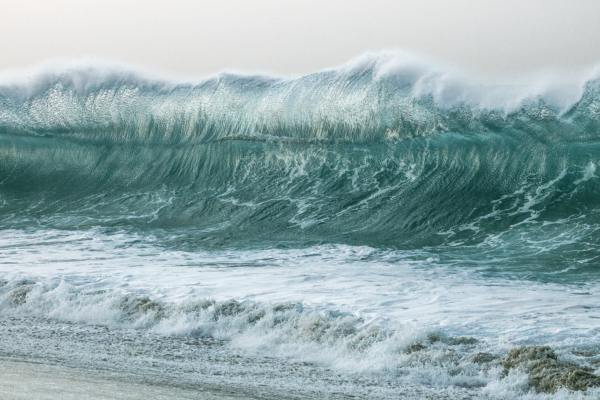As the world increases focus on the environment and sustainability, the search has intensified for alternative sources of energy that are clean and renewable. One such alternative is found in something that covers 70% of our planet: oceans.
More than 1,000 years ago, Europeans used ocean tides to operate grain mills. Today tidal power plants are used to produce electricity, although the amount produced is still small compared with energy demand. Many coastal areas are looking at the viability of using tidal energy to replace some of their fossil fuel use.

What Is Tidal Energy?
Anyone who has been caught in a current or riptide in the ocean knows that there is a tremendous force in the water. Tidal energy harnesses that natural force and produces power from the rise and fall of ocean tides. In some places, water levels between low and high tide can vary up to 40 feet. In order to produce tidal energy, a tidal range of at least 10 feet is required.
Special generators convert tidal energy into electricity, and certain conditions must be present to make tidal energy an economical option. Currently, there are three ways to get tidal energy: tidal streams (a fast-flowing body of water created by tides), barrages (large dams), or tidal lagoons (ocean water partly enclosed by a natural or manmade barrier).
As with any energy resource, there are advantages and disadvantages to tidal energy.
Advantages of Tidal Energy
Clean
Tidal energy is a renewable and extremely environmentally-friendly energy source, which doesn’t emit any greenhouse gases. This is one of the primary advantages that appeals to many.
Space-saving
Compared to other sources of renewable energy, tidal energy doesn’t take up a lot of space. The largest tidal project in the world (Sihwa Lake Tidal Power Station in South Korea) was added to a 12.7-kilometer long seawall. Compare that to a large wind farm, like the 100,000-acre (404 km2) Roscoe Wind Farm in Texas, or the space required for solar farms, like the Bhadla Industrial Solar Park in India that spans 10,000 acres (40.4 km2).
Predictable
Another advantage of tidal power is that it’s predictable. Gravitational forces on oceans are continuous and cyclical, so it’s easier to design efficient systems. Tidal power can also provide energy at relatively low speeds, unlike wind power.
Disadvantages of Tidal Energy
Possible Environmental Impact
A potential disadvantage of tidal power is the effect a tidal station can have on the ecosystem around it. Barrages can change the water level in tidal basins or affect navigation and recreation. More research is needed to assess the impact on the marine environment.
EMF Emissions
Electromagnetic emissions might disrupt marine life near tidal power stations. Research has primarily looked at EMFs from subsea cables, but it may apply to tidal power stations too. Some studies have shown that EMFs can affect the sensitive balance of marine ecosystems. Sealife that uses natural magnetic fields to navigate their environment may be particularly susceptible.
High Construction Costs
Tidal power involves a heavy up-front price tag. Long-term generation costs are relatively good compared to other renewable energy sources, but the initial construction cost is high. This makes investing in tidal energy riskier.
Opportunities for Tidal Energy in New Jersey
Currently, the United States does not have any tidal power plants, and there are limited sites where constructing one would be economical. There are some possibilities in the state of New Jersey to bring the U.S. on board with this renewable energy source.
In April 2019, New Jersey ranked as the 16th most environmentally friendly state according to an analysis by WalletHub. New Jersey also has one of the most ambitious Renewable Portfolio Standards in the country, which requires that 35% of the state’s energy come from clean energy sources by 2025, and 50% by 2030.
New Jersey may have the drive and motivation to take advantage of opportunities for tidal energy, and they might have the right conditions as well.
In 2014 The City College of New York published a 63-page, in-depth report diving into potential sites for tidal power in New Jersey. The scientists considered tidal power strength, water surface area, water depth, and environmentally sensitive zones. The report concluded that there are 31 sites in New Jersey with the potential to capitalize on tidal energy.
A Cleaner Environment for Tomorrow and Beyond
Residents of New Jersey don’t have to wait for tidal energy to contribute to a cleaner environment. Contact Spring Power and Gas to find out how you can offset your carbon footprint today.







